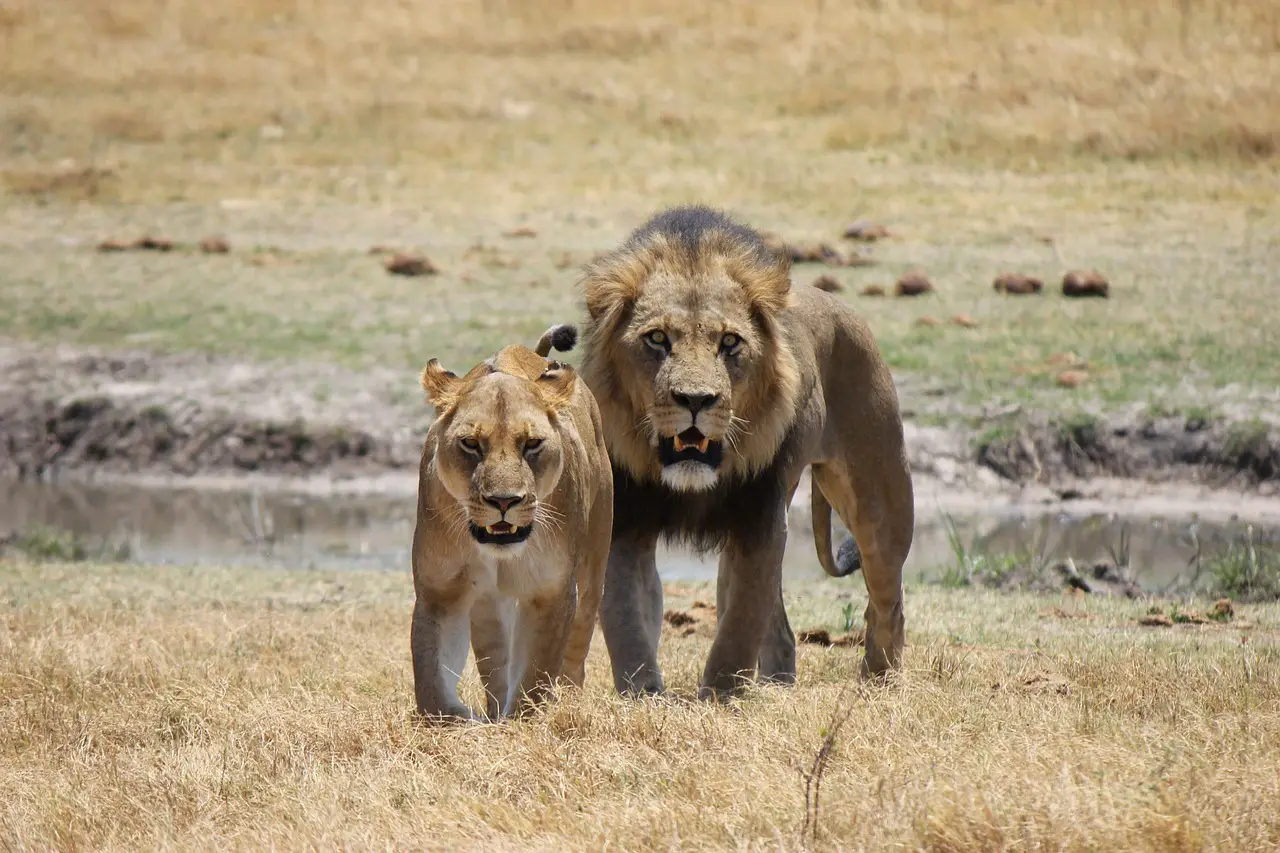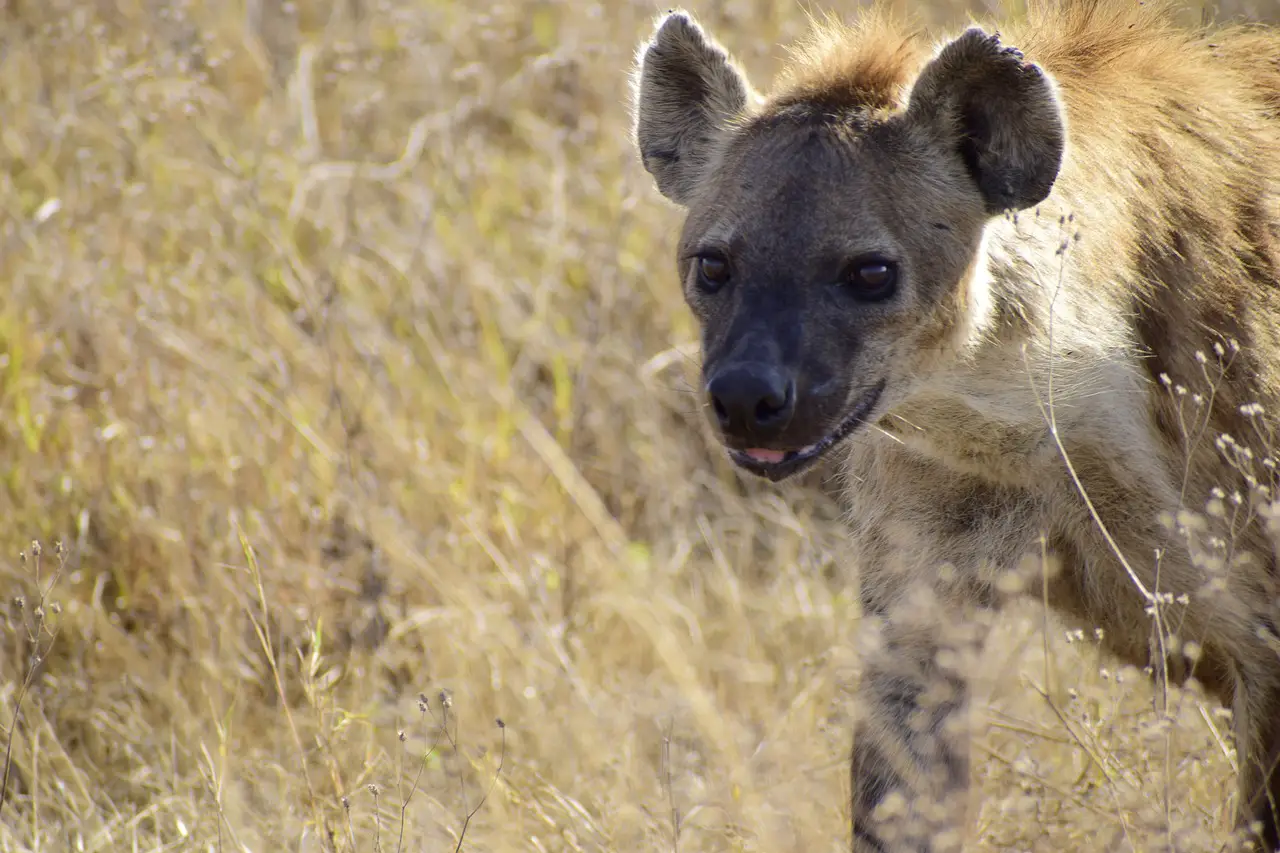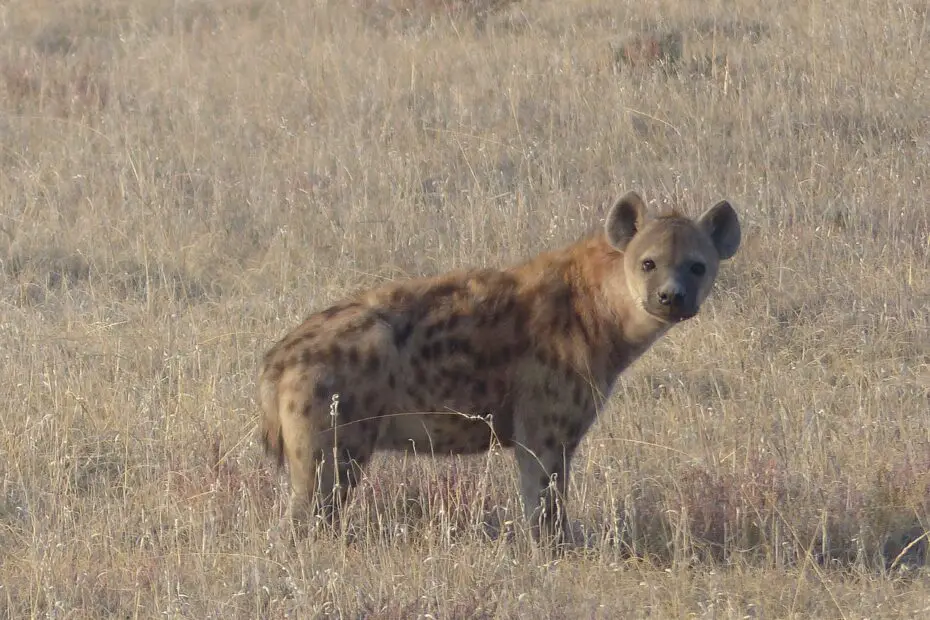The animal kingdom is a realm filled with fascinating creatures, each with its unique set of traits and survival strategies. Amongst the African savannah’s most iconic and ferocious inhabitants are lions and hyenas. Lion vs Hyenas, we will explore the contrasting characteristics of these apex predators and delve into their fierce encounters.
You may also want to read about the grizzly bear vs the brown bear.
1. Introduction
The lion and the hyena are two of Africa’s most renowned carnivores, each occupying distinct roles within their ecosystems. Lions are celebrated as the kings of the jungle, while hyenas have often been misunderstood and maligned. By understanding their differences and similarities, we can gain insight into the dynamics of their interactions.
2. Lion Characteristics
2.1 Size and Strength
Lions are imposing creatures, with males reaching lengths of up to 10 feet and weighing around 400 pounds. Their muscular build and powerful jaws allow them to subdue large prey with relative ease. The majestic mane that encircles the male lion’s head serves as a symbol of strength and dominance within their social structure.

2.2 Hunting Abilities
Known for their exceptional hunting prowess, lions employ a cooperative strategy to bring down prey. They utilize stealth, camouflage, and calculated teamwork to ambush and overpower their targets. Lions possess remarkable speed, agility, and an acute sense of hearing, enabling them to stalk and capture swift and elusive prey.
2.3 Social Structure
Lions are highly social animals that form prides, consisting of multiple females, their offspring, and a dominant male. This social structure enables cooperative hunting, territorial defense, and the protection of their young. The male lion plays a crucial role in safeguarding the pride, often engaging in fierce battles with rival males to maintain his position.
3. Hyena Characteristics
3.1 Size and Appearance
Hyenas have a robust build, with females being larger than males. They exhibit a distinctive body shape, characterized by a sloping back and powerful forequarters. Their front legs are longer than their hind legs, providing them with agility and stability during hunts. Despite their rather unattractive reputation, hyenas possess a unique charm, with their expressive faces and haunting vocalizations.
3.2 Hunting Techniques
Hyenas are incredibly versatile hunters, employing both scavenging and hunting techniques. They have an impressive bite force, capable of crushing bones with ease. Rather than relying solely on speed, hyenas employ endurance hunting, pursuing prey relentlessly until exhaustion sets in. They are also opportunistic scavengers, often scavenging from the kills of other predators.
3.3 Social Behavior
Hyenas exhibit complex social structures, with clans comprising multiple individuals led by a dominant female. They have a matriarchal society where females hold significant power and maintain a strict hierarchy. Intricate vocalizations, such as the infamous “laugh” or “whoop,” help hyenas communicate within their clan and claim their territories.

4. Lion vs Hyenas Encounters
4.1 Competitive Interactions
Lions and hyenas share overlapping territories, leading to inevitable clashes and competition for resources. Both species fiercely defend their respective territories, exhibiting territorial aggression when encroached upon. These encounters are marked by intense vocalizations, posturing, and occasional skirmishes, with each side attempting to assert dominance.
4.2 Hunting Competition
In the battle for survival, lions and hyenas often compete for the same prey. While lions have a reputation for being dominant hunters, hyenas’ persistence and ability to work collectively make them formidable adversaries. Scavenging hyenas can outnumber and overpower a single lion, leading to contentious conflicts between these two predators.
4.3 Adaptability and Survival
Both lions and hyenas have adapted to thrive in their respective niches. Lions’ cooperative hunting and regal presence secure their position as apex predators. Hyenas, on the other hand, excel in endurance hunting and scavenging, capitalizing on their agility and numerical advantage. Their divergent survival strategies contribute to the coexistence of these formidable species.
5. Conclusion
The lion and the hyena represent contrasting yet equally fascinating facets of Africa’s vibrant wildlife. The lion’s majestic appearance, strength, and strategic hunting techniques make it a symbol of power and nobility. Hyenas, with their unique adaptations, endurance, and social structures, exemplify resilience and resourcefulness. As these two predators navigate their shared landscapes, their encounters shape and mold the delicate balance of nature.
Frequently Asked Questions (FAQs)
1. Do lions and hyenas often fight each other? Yes, lions and hyenas engage in fierce territorial disputes and competitive interactions, leading to occasional fights.
2. Who would win in a fight between a lion and a hyena? The outcome of such a fight is difficult to predict, as it depends on various factors such as the size and strength of the individuals involved, their health, and the circumstances of the encounter.
3. Are lions more powerful than hyenas? Lions are generally considered to be more powerful due to their size, strength, and cooperative hunting abilities. However, hyenas possess unique adaptations and social dynamics that make them formidable competitors.
4. Can hyenas steal prey from lions? Hyenas are opportunistic scavengers and can often steal kills from lions. They outnumber individual lions and can use their numbers to intimidate and overpower them.
5. Why do hyenas have a bad reputation? Hyenas have often been misunderstood and portrayed negatively in popular culture. Their scavenging behavior and distinct vocalizations have contributed to their reputation, although they play a vital role in ecosystems as nature’s clean-up crew.
